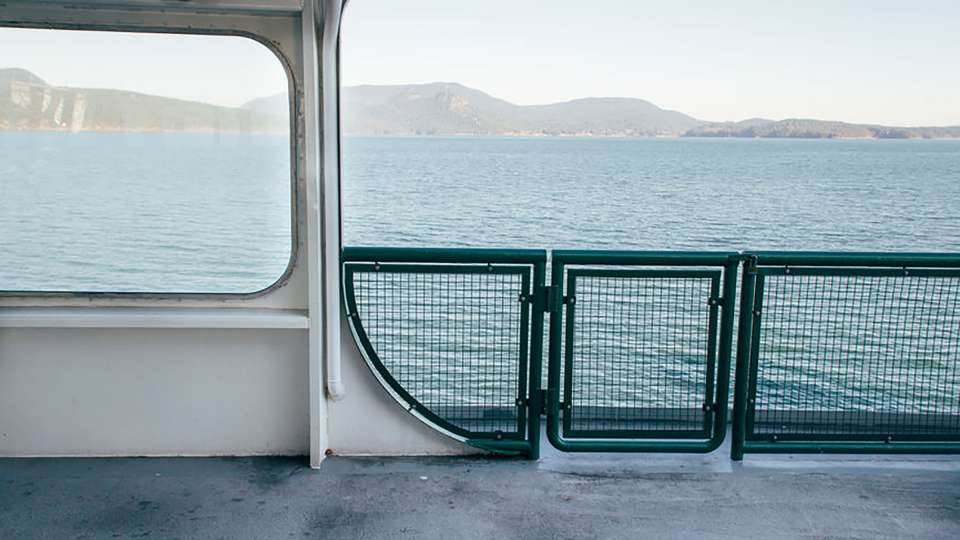
Of all the places with natural beauty in the Pacific Northwest, the San Juan Islands rank high on the list. The archipelago, located about three hours from Seattle, is known for its art, outdoor activities, agriculture and slowed-down pace.
Planning a visit? These locals’ tips will help you have a healthy getaway.
Make outdoor exploring your daily exercise
Natural beauty is one of the biggest draws to the islands for most people, and there are endless options for roaming, hiking, biking and kayaking.
“It’s a really easy place to go hiking and enjoy the beaches and nature, which is what I love about living here,” says Wendy (Wen) Murphy, A.R.N.P., a primary care provider at the UW Medicine Lopez Island Clinic.
Whenever possible, hike or bike with a friend. Spotty cell service on the islands means you won’t always be able to call for help if you injure yourself or get lost.
Practice safe biking
It goes without saying that you should wear a helmet if you plan on bringing or renting a bike for your trip. But researching bike routes and understanding the geography of the island you’re visiting ahead of time can help you plan the safest routes.
Lopez Island, which is the flattest of the San Juan Islands and has the least traffic, is the preferred island for biking, says Barbara Marrett, communications and stewardship manager for the San Juan Islands Visitors Bureau. Orcas Island, on the other hand, has windy roads without shoulders and is much hillier than the other islands, making it less ideal for tourists hoping to spend the day exploring by bike.
Fill up on foods grown and raised locally
Farms that grow and raise fruit, vegetables, herbs, grass-fed meats and more are scattered throughout the islands. You’ll find food grown across the islands at weekly farmers markets, which are a great place to meet locals and get to know the people who grow the food in your favorite farm-to-table restaurants. Many farms also offer farm visits, so you can see where your food comes from.
Plan ahead to avoid ferry stress
Getting to and from the islands during peak season is often synonymous with long (and we mean long) ferry lines on the mainland in Anacortes or on any of the islands. Avoid the headache by making a reservation before your trip, which you can change until two hours before the ferry leaves.
Each ferry has vehicle standby space up for grabs, which is what the lines are all about.
Pro tip: If you’d rather not deal with a reservation, there is often plenty of room on early morning and late night ferries, Marrett says.
If you do end up in an hours-long line, try to embrace it, suggests Murphy (who lives on Lopez Island, the only island where you can’t make a reservation to return to Anacortes). Pack a book and some games for the kids, use the bathroom before getting in line if you aren’t a fan of portable toilets and let yourself soak up the last few island vibes you can.
“It’s your last opportunity to totally chill before going home,” says Murphy.
Cover yourself for peace of mind
Hopefully, your trip will be all hiking, farmers markets and relaxing with the ones you love. But it’s important to understand how to get critical care in case there is an emergency.
Kirsten Pickard, A.R.N.P., practices at the UW Medicine Orcas Island Clinic and lives on remote Waldron Island. She cares for patients throughout the San Juans and considers air medical transport membership a requirement for island life.
With AirCare Membership from Airlift Northwest, you can give yourself peace of mind that you’re financially covered for life-saving emergency care even when visiting the most remote parts of the island chain. Air medical transport can be expensive and insurance may not cover all costs. The membership protects you from the unexpected costs of air transport during a medical emergency.
Airlift Northwest serves the entire Pacific Northwest and flies 3,800 patients a year, so your membership is available wherever your adventures take you.
Enjoy being on island time
The best part of being on an island? Taking the time to slow down, says Pickard. Whether you choose to read a good book, catch up on sleep or just lay low for an afternoon—there’s no time like down time.

 Healthy ideas for your inbox
Healthy ideas for your inbox





